Heading north up the east coast of Florida
1st - 11th March 2007
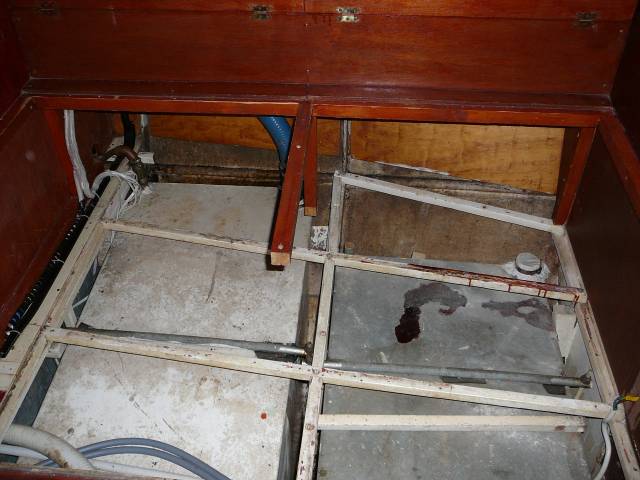
How are we going to look behind there?
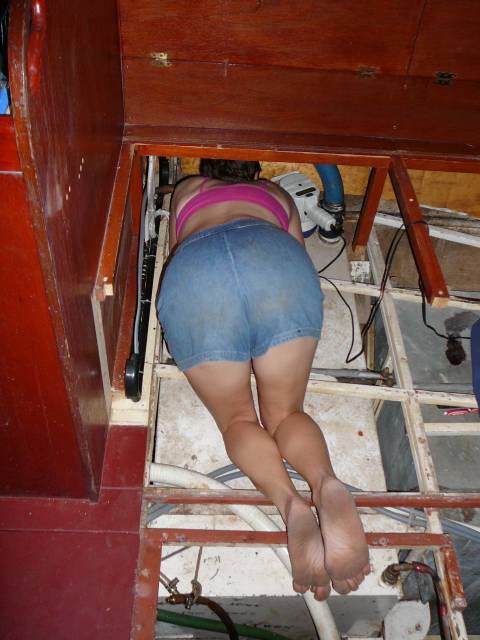
Oh.......that's how!
Much debate followed: Should be continue to the Bahamas, worrying about the rust which we couldn't get at to treat or even to assess the seriousness of? Did we need to haul out straight away, was the problem that serious, might we sink?
Eventually, after monitoring the bilges for a couple of days and seeing that only a tiny amount of water collected in the bilge, we decided our best option would be to head back to Green Cove Springs to deal with the issue, rather than sail to the Bahamas constantly worrying about it. Once again we had been looking forward to our "holidays" in the Bahamas, after all our hard work in Green Cove Springs. Yet again, wishing for a holiday had turned out to be a dangerous thing.
A desperate phone call was made to Anju's favourite welder, Harry Waldon, and we were reassured that we'd be able to help us out on our return to Green Cove Springs.
In the interests of fending off a serious cloud of despair which was descending on the crew, we decided to have some fun whilst waiting (yet again) for a favourable wind, this time to head north again. We paid a visit on foot to the John McArthur State Park. The walk there was longer than expected and by the time we'd arrived, our energy for strolling on the beach was low but we did manage to find some lovely Scotch Bonnet shells to add to our shell collection. Next day we decided to return again, this time getting there by bike, so we could enjoy the trails and spend more time walking on the beach. It was a great morale booster for a disheartened crew!
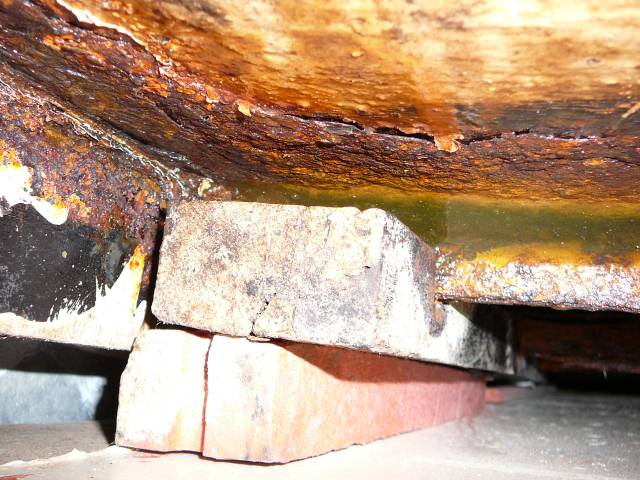
Uh-Oh!
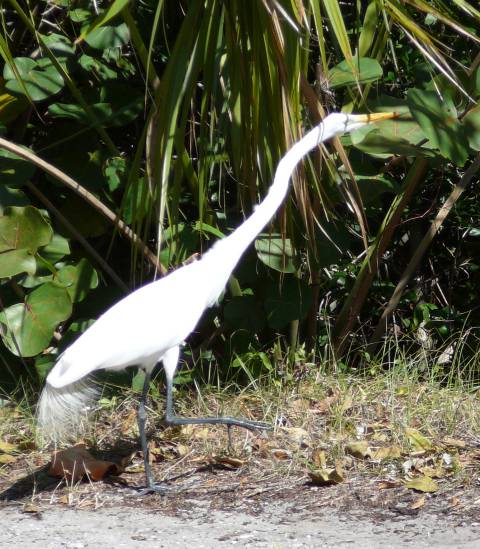
Welcoming dance from the egret who seemed to be gatekeeper at the park
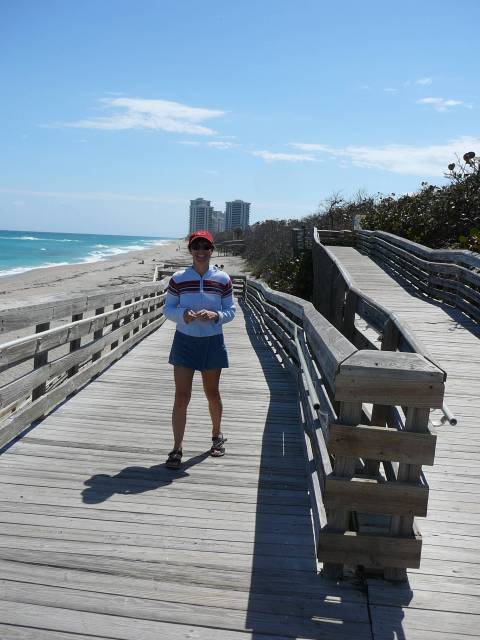
Let's hit the beach
We were definitely on a mission to get back as soon as possible and really pushed ourselves to make good mileage each day. We timed our departure from Lake Worth, northwards up the Intracoastal Waterway just right. As soon as we'd passed through the PGA drawbridge, we heard on the VHF radio that it would not be opening again for over an hour, due to construction work.
Instead of stopping overnight in Fort Pierce, as we would normally have done, we pushed on and picked up a mooring buoy at Vero Beach marina. We usually anchor and are reluctant to pay for mooring but this one turned out to be well worth the few dollars it cost, as we were finally able to enjoy the luxury of a long, hot shower. We'd avoiding refilling the water tanks aboard, knowing we'd be hauling out in a few days, so had been on tight water rations! We didn't get to visit Vero Beach at all, as we were on the waterway again at 6.45 am the following morning, although we decided we would certainly make a stop there again in the future. The next night was spent at Cocoa.
The following morning we made another early start and were alarmed to hear that our next bridge, at Titusville, had broken down. Again we timed our arrival right, arriving just at the moment it had been fixed! We motored on through the Mosquito Lagoon, enjoying the aerial displays of pelicans and ibis which lived on the nearby tiny sandy islands. As we headed north from the Haulover Canal, we passed an ex-neighbour from Green Cove Springs, who kindly informed us we were headed the wrong way. It turned out we weren't the only ones with problems, he'd spent a tiring night at sea when his autopilot failed.
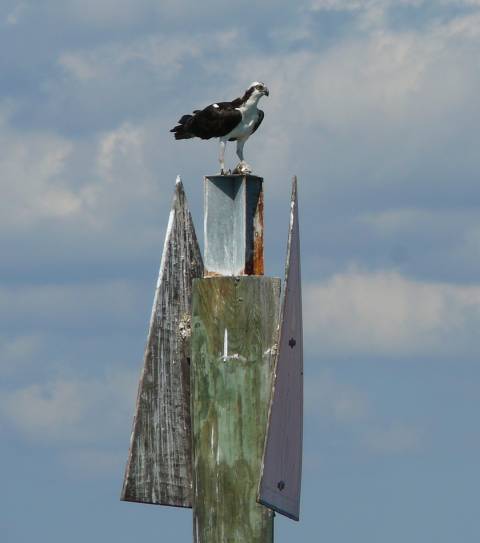
Osprey enjoying breakfast at Haulover Canal
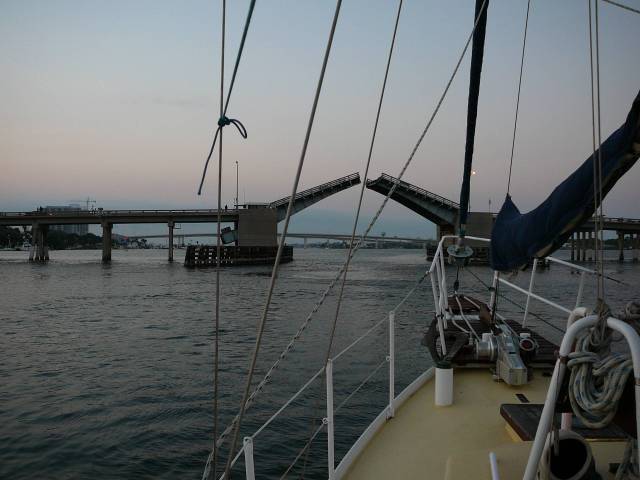
Negotiating the bridges in busy Daytona
The presence of so much motorcycle traffic made our passage through Daytona somewhat stressful for the poor bridge operators, who had to deal with standing traffic on the bridges and excitable motorcyclists who wanted to sneak across the bridge after the stop lights had been activated. It was dark when we anchored and later we were joined by a catamaran which we'd spotted aground earlier on our way through Daytona. It was a mystery to us how a catamaran had run aground but it seems to be quite a common problem with shallow draft boats.
We'd planned another early start but awoke to dense fog. After some debate, we decided it would soon clear and with our radar and chart plotter, we should be able to pick our way from marker buoy to marker buoy on the ICW. As we raised our anchor, a nearby sport-fishing boat obviously thought that we knew what we were doing and decided to follow us. He must have had second thoughts as we zig-zagged our way towards our first marker buoy whilst waiting for the chart plotter to pick up a GPS position but we both continued regardless. It was amazing how disorientating the dense fog was and we were grateful when after about an hour it lifted.
We hoped to make St. Augustine that evening and bearing in mind the trauma we'd had with the Bridge of Lions being closed on our trip south, decided that if it was operational, we would pass through it that afternoon just in case they decided to close it again. The bridge's schedule was only hourly and we arrived with a couple of minutes to spare, more by luck than anything else. We anchored to the north side of the bridge, where the wind and tide were in opposite direction and Anju spent a fun couple of hours sailing in circles around her anchor, which was pretty disconcerting.
Next morning we awoke again to dense fog and decided to sneak an extra hour in bed until it thinned a little. As we headed northwards in the strong tidal current towards the St. Johns River we encountered the McCormick draw bridge and found the operator to be somewhat secretive. Our pilot guide listed the opening schedule for Sundays as on the hour and half hour and as we were swept towards the bridge we tried to call on the VHF to check with the operator. We received no reply to our frequent hails, it seemed the operator didn't want to let us know what he had planned, which was bad for our nerves. Suddenly as we reached the point where we'd need to make a U-turn to avoid hitting the bridge, the barriers began to come down, stopping the road traffic and the bridge was opened with perfect timing. We debated why the operator wouldn't talk to us and wondered if perhaps he wasn't supposed to open on demand, so didn't want to publicise this opening over the radio-waves. In any case we were grateful as we were swept along at 8 knots into the St. Johns River and towards Jacksonville.
In Jacksonville we had two more bridges to negotiate, the first was the Main Street Bridge which raised on request and the second was a railroad bridge which was normally open to river traffic unless a train was coming. As we passed the Main Street Bridge, we were happy to note that the railroad bridge was just reopening after a train had passed over the river. As we neared the bridge though, we were startled as the warning lights began to flash again, indicative of an imminent bridge closure. After checking with the bridge operator and being given permission to pass through the bridge before it closed we pushed on through and the bridge plonked down right behind Anju's stern.
We were lucky that the clocks had gone forward the previous night, so with the aid of the strong tidal currents we were able to make it all the way to Green Cove Springs by nightfall, thanks to the extra hour of daylight. Our final approach to the anchorage was made in the pitch dark however and for a couple of stressful minutes we peered into the darkness in search of the red buoy in our path, on which the light wasn't working. Once we'd passed it safely we headed towards the docks at the marina and thanks to a powerboat on the end of the dock who lit his deck lights to aid our approach, we picked our way in towards the marina and found a spot with enough water in which to drop our hook. After only three weeks, we were back where we'd started from!